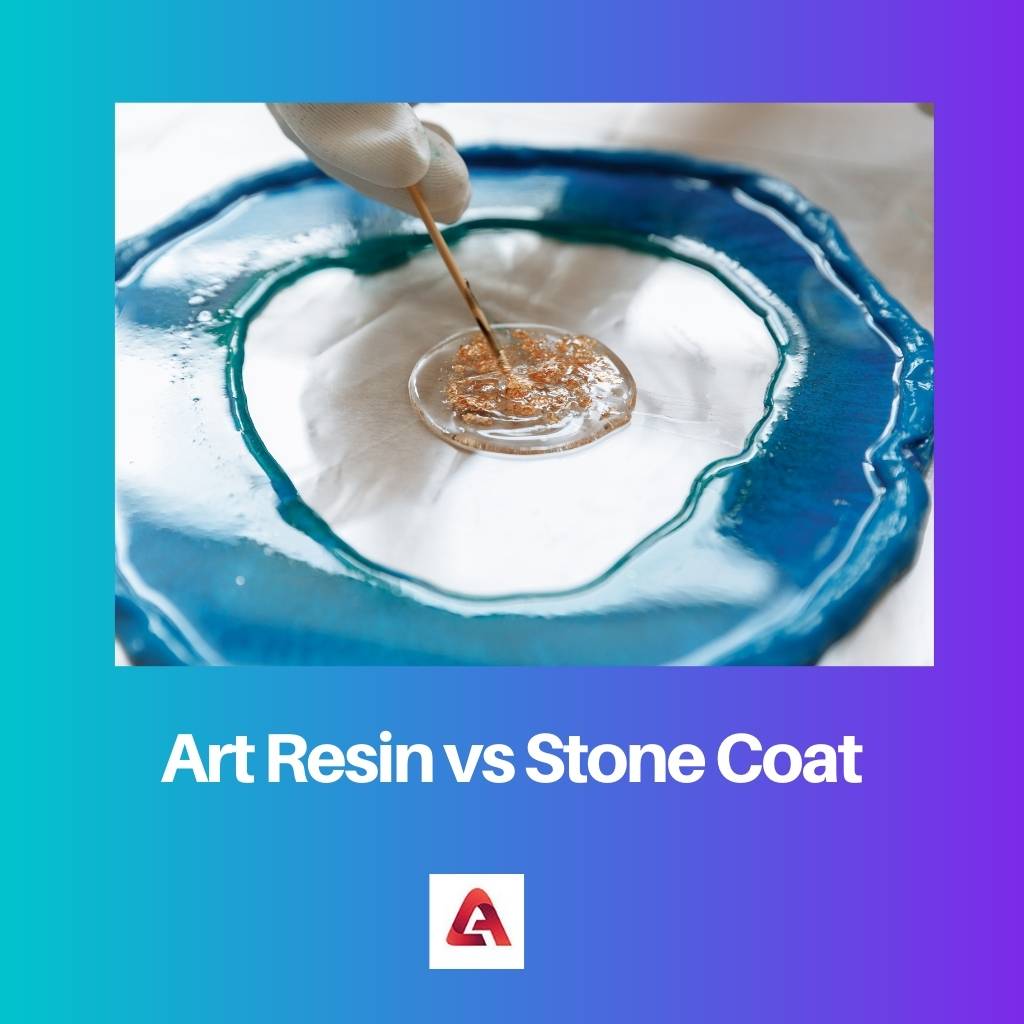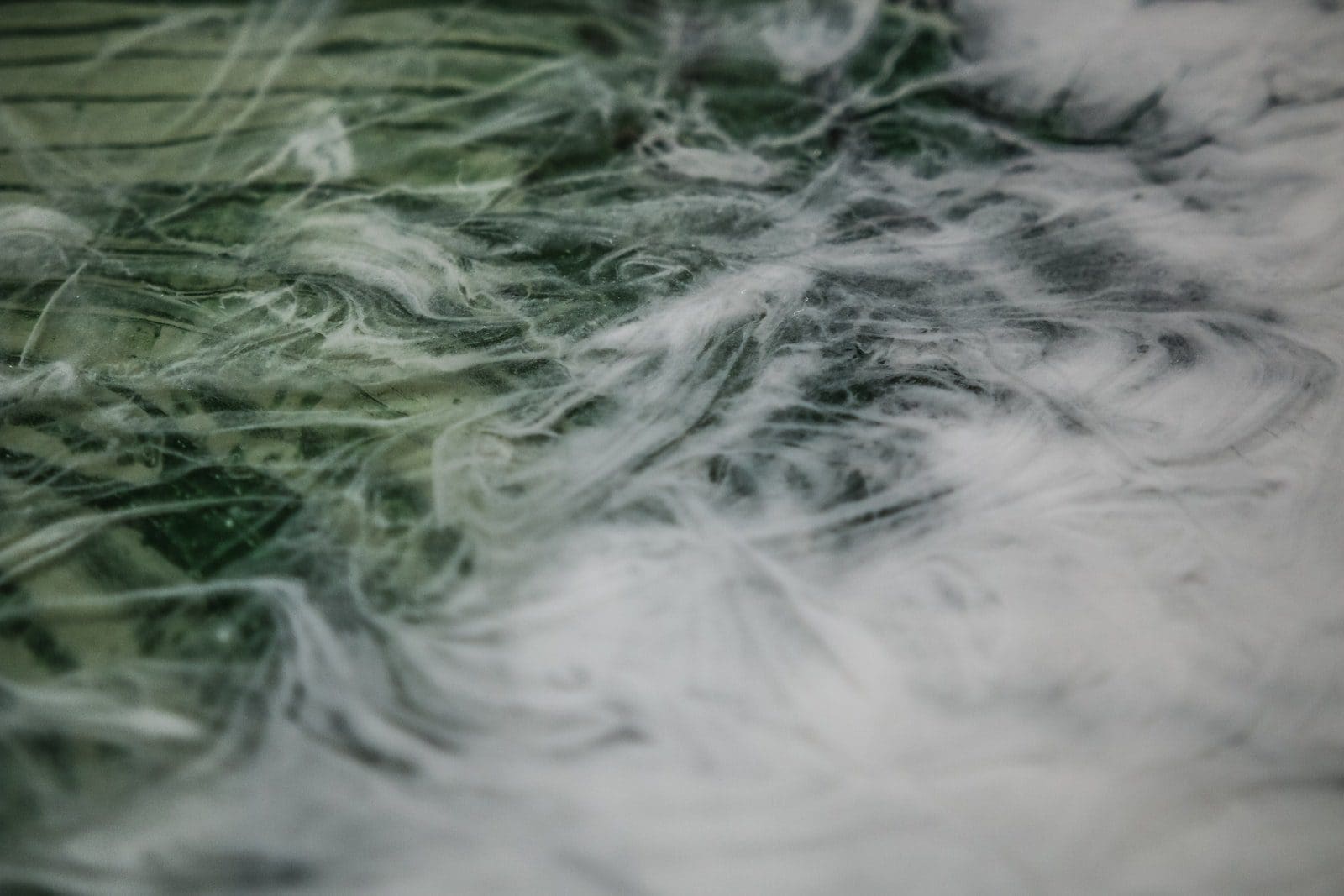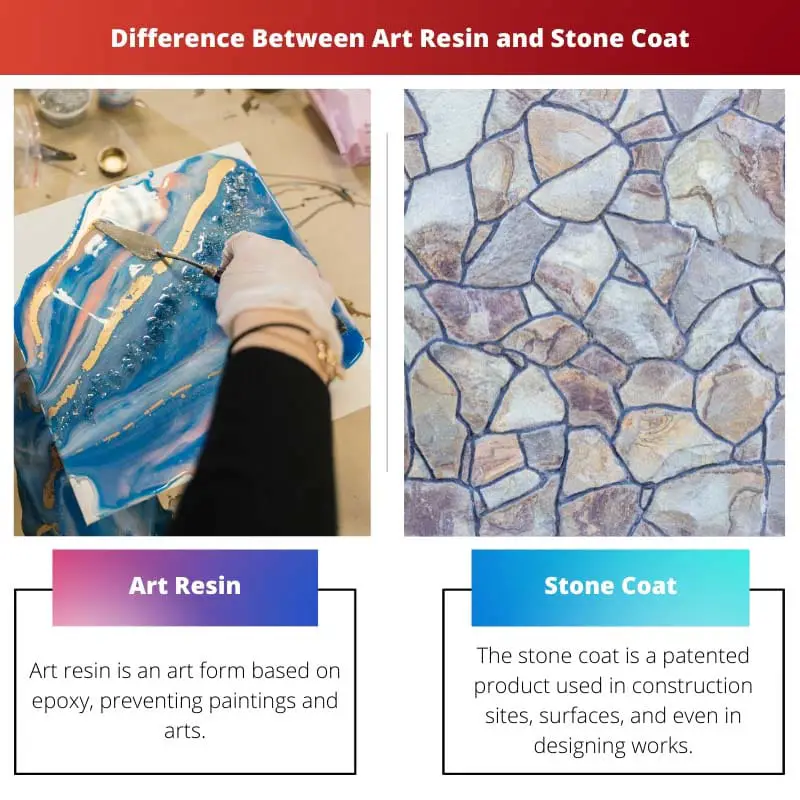Well, stone coats and art resins have been getting popular since their usage and protection properties are highlighted. Indeed these two are very important in art, paintings, construction, designed for specific and special surfaces, etc.
Various epoxy resins are available in the market, but these two have a special place in the field of artwork and construction. But they’re not the same since there’s a difference in their properties.
Key Takeaways
- Art Resin is a high-gloss epoxy resin suitable for creating art pieces, while Stone Coat is a countertop epoxy ideal for creating durable surfaces.
- Art Resin has a longer working time than Stone Coat, allowing artists to work on their projects longer.
- Art Resin has a thinner consistency than Stone Coat, which is thicker and can be used to create a variety of textures and effects.
Art Resin vs Stone Coat
The difference between art resin and stone coat is that the first one is used in artworks and meets the creative needs by prioritising major factors, while the stone coat is used for surfaces at construction sites. It’s more like a solution that is used in the kitchen, bath, or designing a project under a budget.

Art resin is a whole liquid solution that has several important advantages. For DIY purposes, art resin is one and only for you. Art resin is an epoxy resin solution that has advantages like clarity and paramount protection of your art against UV radiations, and also, it’s non-toxic in nature.
Stone coat, as the first word reads, is basically applied and used in construction sites or on surfaces for protection. The stone coat is a patented product made of specialised hydraulic limestone and other naturally occurring earth stones.
Comparison Table
| Parameters of Comparison | Art Resin | Stone Coat |
|---|---|---|
| Definition | Art resin is an art form based on epoxy, preventing paintings and arts. | The stone coat is a patented product used in construction sites, surfaces, and even in designing works. |
| Composition | Art resin comprises UV stabilizers with some advanced additives called HALS that stop amine light stabilizers helping in disrupting the yellow process before it starts. | Stone coat comprises specialized hydraulic limestones and other naturally occurring stones. |
| Scalability | Art resin is confined to artworks and paintings. | The stone coat has a wider application since it covers kitchens, bathrooms, construction sites, and design. |
| Cost | The average quality art resin cost of 1200 gms is fairly high. | The average cost of a quality stone coat for 1200 gm is comparatively low. |
| Hardening period | It takes a while day or so for art Resin to harden. But you can touch the surface after 8 hours without stickiness. | For the stone coat, the hardening time is 20-30 minutes, or we can conclude, the hardening time is way quicker. |
What is Art Resin?
Well, there are several reasons why and how things are to be protected from foreign elements. It’s important to protect since the elements are inevitable to be prevented. Epoxy acts as a defender that makes sure elements don’t corrode the fine pieces.
For this, art resins are available in the market at low prices that make sure your hard work doesn’t go in vain. These art resins are famous for protecting two major problems.
The first one could be the protection from ultraviolet radiation emitting from either sun or from anywhere. And the second one could be it’s non-toxic and care for human health.
Well, art resins make sure the paintings stay clear and crystal for the long term. Generally, paintings get hazy and blurry, losing the shine and lustre with time, but by the pure and quality solution of art, Resin can make sure that the beauty doesn’t fade away so easily. These are tested before being deployed in the market.
Art resin is a thick solution. The viscosity is low since it flows gradually on the surface. In addition, art Resin comprises light stabilizing additives in the formula to make sure it doesn’t lose even in normal lights or bulb lights.
HALS, on the other hand, hinders the yellowing before the process making this kind of solution the best fit for use.

What is Stone Coat?
It’s no news that several things have actually made our lives easier. From modular kitchens to hardware, everything is improving day by day. The field of technology has made it possible for many things to become handy and easy to use.
Talking about the surfaces of walls, these lose their shine with time. Several epoxies are available in the market to prevent this from happening, but stone coats are one of the major user products among the rest.
The stone coat is basically a patented item made up of specialised hydraulic limestone and various other naturally occurring stones in the earth. Well, the stone coat not only confines to surfaces but also has a wider application as well.
You can use it in kitchen hardware and modular outlets, bathrooms, where there’re tiles, designing portions and even at workplaces as well. The stone coat can prevent several foreign elements, making it the best choice and suitable for marbles and surfaces.
The stone coat is available at different prices. The rate of 1200 gm stone coat except is not much out of budget.

Main Differences Between Art Resin and Stone Coat
- Art resin is a solution made for paintings and artists, while the stone coat is a solution made for a wide application like kitchens, bathrooms, and designing.
- Art resin cost of 1200 gm is higher while the rate of the same quantity of stone coat is lower.
- Art resin is confined to arts, while stone coat covers all surfaces and even paintings.
- Art resin is made of specialised light stabilizers, while the stone coat is made of hydraulic limestone and various other naturally occurring stones.
- Art resin takes a whole day to harden. However, you can touch it while the stone coat takes less than a day to harden.




